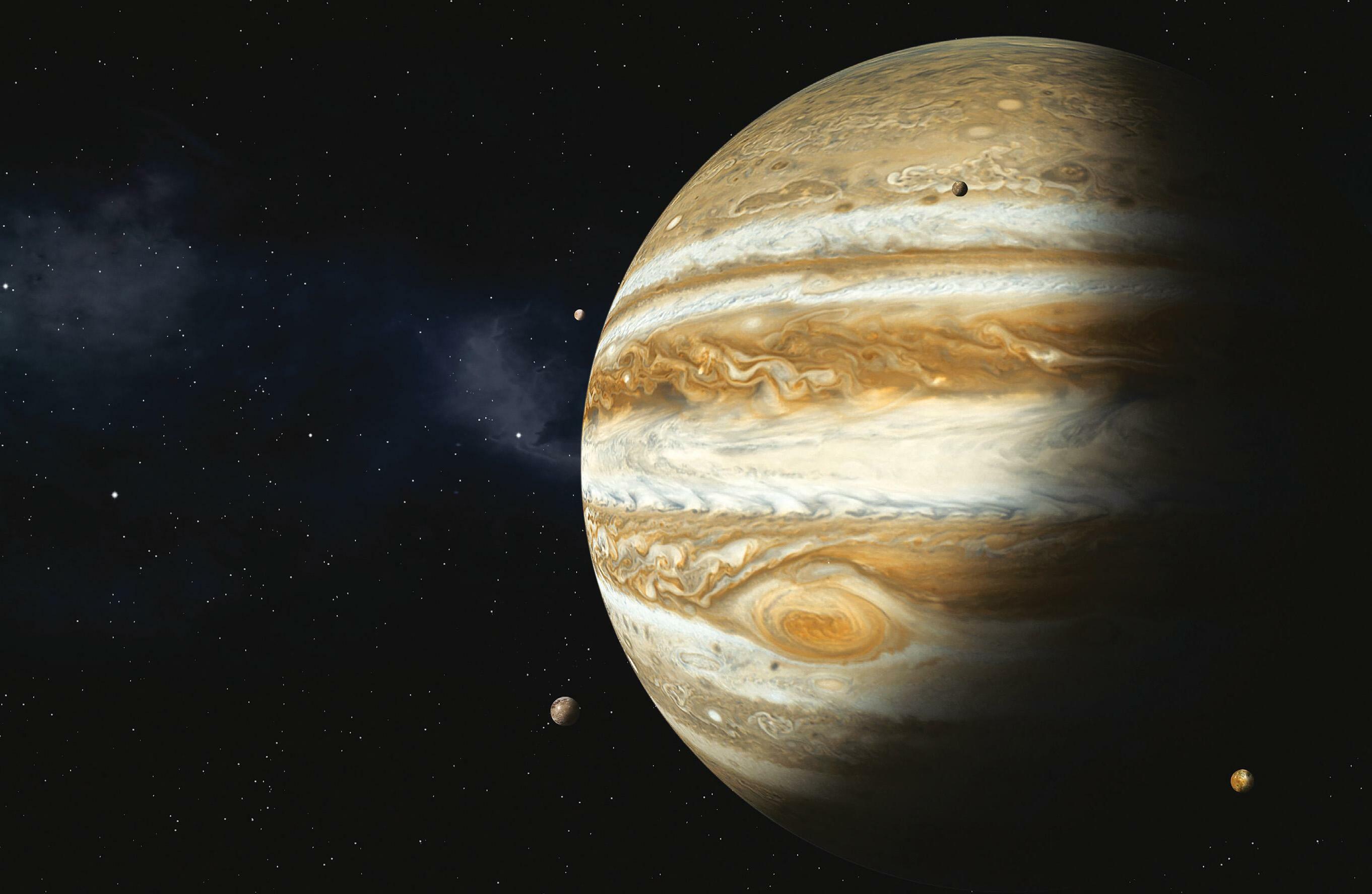
Large enough to fit every other planet inside, it’s no surprise Jupiter holds the title of “King of the Solar System”.
Last year the European Space Agency sent the Jupiter Icy Moons Explorer (JUICE for short) on the long journey towards the planet, and this October NASA will launch the Europa Clipper to join it on its way. The trip will take five and a half years, because Jupiter lies around 484 million miles from the Sun – five times further away than Earth.
With its century-long storms, deadly radiation and a glittering assortment of moons, the solar system’s largest planet is a fascinating – and deadly – place to visit.
A giant gassy ball
Jupiter is around 86,881 miles wide and it contains more than twice as much mass as every other planet put together. The more material a planet has, the stronger its gravity. So, if you stood on a set of scales on Jupiter you would be nearly two and a half times heavier than you are on Earth. You wouldn’t be any bigger – the planet is just pulling down on you more.
You’d have a tough time standing anywhere on Jupiter though, because it’s a gas giant. The solar system’s inner planets – Mercury, Venus, Earth and Mars – are mostly made of rock, but Jupiter is entirely made of its atmosphere.
The planet is about 90% hydrogen gas, the lightest known element in the universe. Most of the remaining 10% is helium, the gas used to fill balloons so they float. There are also trace amounts of other chemicals, such as water and ammonia (which is used on Earth to make plant fertilisers), which form Jupiter’s clouds.
Jupiter’s outer atmosphere is about 30 miles thick. Below this, there is a layer of hydrogen and helium 13,000 miles thick, which changes from gas to liquid as the depth and pressure increase. Under this lies a deep sea – 25,000 miles deep – of liquid metallic hydrogen.
This story is from the Issue 79 edition of The Week Junior Science+Nature UK.
Start your 7-day Magzter GOLD free trial to access thousands of curated premium stories, and 9,000+ magazines and newspapers.
Already a subscriber ? Sign In
This story is from the Issue 79 edition of The Week Junior Science+Nature UK.
Start your 7-day Magzter GOLD free trial to access thousands of curated premium stories, and 9,000+ magazines and newspapers.
Already a subscriber? Sign In

Are cats smarter than dogs?
They're the UK's top pets, but which is more intelligent? You decide!

Could people turn Mars into another Earth?
Sven Bilén explores how humans might make a home on another world.

FUNNY BY NATURE
Claire Karwowski tracks down the wackiest wildlife that's cracking up the animal kingdom.

WEIRD SCIENCE
A round-up of the strangest science stories from around the world.

Guardians of the forest
Meet the incredible people protecting the Amazon rainforest.

The Mariana Trench
Dive in to find out how far down the ocean goes and what it's really like at the bottom.

Megan McCubbin
Meet the zoologist trying to change people's views of animals with a bad rep.

MAX POWER
From the second you wake up in the morning, your way of life is made possible thanks to the amazing power of electricity.

Your heart has a "brain"
New research by scientists at Sweden, and Columbia University, in the US, suggests that your heart could have its own \"mini brain\".

Ethiopian wolves could be furry pollinators
Sweet-toothed Ethiopian wolves have been seen lapping up nectar have been seen happing up nectar from red hot poker flowers.